Headlines and events archive
Displaying 1 - 50 of 1543
You may also find an archive of news published in the media which are related with the Instituto de Astrofísica de Andalucía - CSIC.
Pages
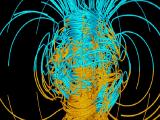
|
16/06/2025 - 18/06/2025
https://indico.iaa.csic.es/event/33/ Granada |

|
03/06/2025 - 05/06/2025
https://www.iaa.es/meetings/nomad-swt-27 Almuñecar |

|
03/07/2025 - 12:30
Increased Hydrogen escape from Mars atmosphere during periods of high obliquity I will talk about a recent study led by IAA-CSIC focused on the atmospheric H escape during high obliquity period in recent Mars (average ~35º in last millions of years). Observations show that current thermal H escape (major water loss process) varies seasonally, with considerable increases during dust storms of both water abundance in the upper atmosphere and H escape rate. Present H-loss rates agree with 3D simulations by the Mars Planetary... Dr. Gabriella Gilli |

|
03/06/2025 - 12:30
Towards an observationally motivated AGN dusty torus model Several models of nuclear dust in active galactic nuclei (AGN) have been presented in the literature to determine its physical and geometrical properties, usually assuming the dust density distribution as the main aspect producing differences in the mid-infrared (MIR) emission of AGNs. My PhD research investigates the physical and chemical properties of dust in the torus of AGNs using MIR spectral analysis and radiative transfer (RT) modeling.... Ulises Reyes Amador |

|
22/05/2025 - 12:30
Galaxies Hidden in the Forest as a new BAO tracer (and other applications) The acceleration of the expansion rate of the Universe is yet to be explained. Several models, including LCDM, try to explain this acceleration. LCDM bases its explanation on a mysterious dark energy, adding up to ~75% of the total energy density of the Universe. Other models present modified theories of gravity to explain this effect. But which one is correct? The expansion history of the Universe is a great observable to discriminate between... Dr. Ignasi Pérez Rafols |
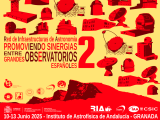
|
10/06/2025 - 13/06/2025
https://riastronomia.es/promoviendo-sinergias-entre-grandes-observatorios-espano… Granada |

|
27/05/2025 - 12:30
Jets in Planetary Nebulae At the end of the 20th century, we thought we had a solid understanding of how low-mass stars evolved into planetary nebulae. However, by studying the stages leading up to these nebulae, we discovered a puzzle: the energy needed to form them was too large to be explained by traditional models. This revelation led us to explore a more complex scenario: the interaction of binary stars. The gravitational energy and angular momentum of these... Dr. Guillermo García Segura |

|
05/06/2025 - 12:30
SO colloquium: What can we expect and hope for in quantum computing? Quantum computing can solve specific problems much faster than classical computing concepts. Promising applications include material science and chemistry as well as optimizations problems Once quantum computing is fully matured, it can even crack the most commonly used encryption methods and thus make emails, credit cards, bank transactions, etc. insecure. In recent years, quantum computing has made significant progress, which raised interest... Dr. Michael Hartmann |
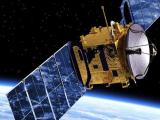
|
26/05/2025 - 29/05/2025
https://indico.iaa.csic.es/event/29/ Granada |
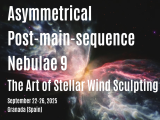
|
22/09/2025 - 26/09/2025
https://www.granadacongresos.com/apn9 Granada |

|
16/10/2025 - 17/10/2025
https://indico.iaa.csic.es/event/26/ Granada |

|
17/06/2025 - 12:30
SO Colloquium: The multiple aspects of Star-Planet Interactions Star-Planet Interactions (SPIs) encompass a range of physical processes that occur in close-in exoplanetary systems, where the proximity between a star and its planet leads to complex magnetic, gravitational, and atmospheric effects. These interactions can influence both stellar activity and planetary evolution, making them crucial to our understanding of exoplanetary environments, habitability, and observational signatures across multiple... Dr. Rim Fares |

|
08/04/2025 - 12:30
Synthetic ngVLA Observations of Ionized Gas in Massive Protostars and Future Prospects for Protoplanetary Disk Studies with ngVLA and SKA. The study of protoplanetary disks is essential for understanding stellar evolution and the origins of planets. However, these systems present significant observational challenges due to their small angular size, low surface brightness, and complex structure. Radio interferometry provides a unique advantage by observing dust and gas at wavelengths that penetrate the dense regions where the protoplanetary disk forms. The upcoming Next Generation... Dr. Miguel Jáquez |

|
01/04/2025 - 12:30
A Minion in PANIC arrives to Calar Alto Observatory Calar Alto has a new tenant: PANIC, the PAnoramic Near-Infrared Camera for Calar Alto. PANIC is a project jointly developed by the MPIA in Heidelberg, Germany, and the IAA in Granada, Spain, for the Calar Alto Observatory (CAHA; Almería, Spain). This instrument can work with the 2.2 m and 3.5 m telescopes. Its original detector has been recently replaced by a monolithic HAWAII-4RG, therefore the instrument covers now a field of view of 26×26... Ana Guijarro, Vianak Naranjo, Antonio J. García, José M. Ibáñez and Sara Muñoz |

|
23/10/2025 - 12:30
WST: The Wide Field Spectroscopic Telescope The WST project aims to design and construct an innovative 10-metre class wide-field spectroscopic survey telescope (WST) in the southern hemisphere. It will feature the parallel operation of two cutting-edge instruments: a high-multiplex (30,000), large field-of-view (3 square degrees) multi-object spectrograph (MOS) operating in both low- and high-resolution modes, and a giant panoramic integral field spectrograph (IFS). WST’s ambitious top... Prof. Roland Bacon |

|
08/05/2025 - 12:30
SO Webloquium: Protecting Dark and Quiet Skies from Satellite Interference: Challenges and Mitigation Efforts The rapid deployment of satellite megaconstellations is fundamentally changing the sky, posing a growing challenge to both optical and radio astronomy. While the issue is widely acknowledged, the full extent of its impact, the ongoing mitigation efforts, and the potential future scenarios remain less well understood. The International Astronomical Union (IAU) established the Centre for the Protection of Dark and Quiet Skies (CPS) to coordinate... Dr. Federico Di Vruno |

|
29/05/2025 - 12:30
SO colloquium: The PARSEC view of star formation and the interstellar medium in galaxies The PARSEC project is a multiwavelength investigation of the centers of galaxies at parsec scales. In this presentation, I will provide a direct visualization of the star formation process in the centers of galaxies, resolved into their building blocks—the star clusters. I will address the triggering process of star formation in a range of galaxies with different morphologies and levels of nuclear activity. This triggering process will be... Dr. Almudena Prieto |

|
01/01/2025 - 09:15
TBP TBP TBP |

|
03/04/2025 - 12:30
Phase curve fitting in the context of large-scale photometric surveys Nowadays, we are experiencing a revolution in astronomical surveys. Thanks to ground-based and orbiting telescopes, millions of observations of asteroids in various photometric filters are available. The main objective of our project is to develop tools for reading, processing, and analyzing large volumes of data. We’ve successfully determined phase curves for thousands of asteroids in orange and cyan filters from the latest ATLAS Solar System... Dr. Milagros Colazo |

|
25/03/2025 - 12:30
What Stops Star Formation in Isolated Dwarf Galaxies in the Most Underdense Cosmic Regions? The shallow potential wells of low-mass galaxies, commonly known as dwarf galaxies, make them highly susceptible to environmental effects, often leading to the complete cessation of star formation. But is quenching solely driven by external forces in harsh environments, or can dwarf galaxies also self-quench through mechanisms like strong stellar winds or supernova feedback, independent of external influences? In this contribution, I present our... Dr. Bahar Bidaran |
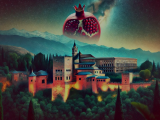
|
23/06/2025 - 27/06/2025
https://talesofblackholes.iaa.csic.es/ Granada |

|
11/02/2025 - 12:30
An Unusual Triple System: CN Lyn Triple star systems hold significant astrophysical importance, offering profound insights into stellar evolution, dynamical interactions, and mass transfer processes. Due to their complexity compared to single or binary star systems, triple systems facilitate a more comprehensive understanding of stellar processes from formation to final stages. Thanks to large photometric surveys, such as Kepler, researchers were able to detect triple systems... Dr. Gökhan Yücel |

|
11/03/2025 - 12:30
J-HERTz: J-PLUS Heritage Exploration of Radio Targets at z < 5 In this talk, I will present J-HERTz, the J-PLUS Heritage Exploration of Radio Targets at z... David Fernández Gil |

|
10/04/2025 - 12:30
Impacts of Cosmic Dust in the Atmospheres of Mars and Venus Cosmic dust particles are produced from the sublimation of comets and by collisions between asteroids. Because the particles enter a planetary atmosphere at hypersonic velocities, collisional heating with air molecules causes a fraction of them to melt, leading to vaporization of their metallic constituents. The injection of these elements causes a wide variety of atmospheric phenomena in the terrestrial atmosphere, including the formation of... Dr. John Plane |

|
26/02/2025 - 12:30
ORCA-TWIN: Fast & low read noise CMOS camera project for planetary science and astrophysics The emerging German Center for Astrophyics (DZA) aspires - next to activities for gravitational wave astronomy, radio astronomy, and big data - to engage in CMOS sensor development with the local semiconductor industry and international partners. In parallel to establishing a first detector lab that has become operational recently, two off-the-shelf CMOS cameras were procured to explore hands-on the capabilities for time domain astronomy and solar... Dr. Martin M. Roth |
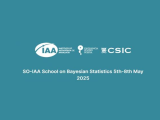
|
05/05/2025 - 08/05/2025
https://indico.iaa.csic.es/event/24/ Granada |

|
25/02/2025 - 12:30
Chemical Fingerprints of Galaxy Evolution I will summarise the main projects we are currently working on that use the chemical abundances and pattern as fossil records of galaxy evolution. In particular, the chemical abundances of the star-forming regions of galaxies contain valuable information about their assembly histories, as well as about the processes that regulate the history of star formation and the mixing of chemical elements. In particular, they encode the history of recent... Dr. Patricia B. Tissera |
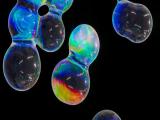
|
03/02/2025 - 20/02/2025
https://indico.iaa.csic.es/event/22/ Granada |

|
06/03/2025 - 12:30
SO Colloquium: Gravitational wave astrometry with the SKAO Pulsar timing array detection of a gravitational wave background represents a milestone in the field of gravitational wave astronomy. However, the origin of such a signal is still a matter of intense debate: while supermassive black hole binaries formed as a result of galaxy mergers represent the most obvious candidate for the gravitational wave signal, many "new Physics" models can potentially explain at least part of the detected background.... Dr. Nicola Bellomo |

|
12/12/2024 - 12/12/2024
https://indico.iaa.csic.es/event/19/ Granada |

|
21/01/2025 - 30/10/2025
https://www.iaa.es/meetings/academic-spanish-course-foreigners-2025 Granada |
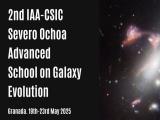
|
19/05/2025 - 23/05/2025
https://www.granadacongresos.com/galevol2025 Granada |

|
30/01/2025 - 12:30
SO Colloquium: Modelling of large-scale magnetic field in low-mass stars Recent spectropolarimetric observations of low-mass stars show that large-scale components of their magnetic fields can exhibit cyclic variations or reversals. This magnetic activity affects detection of exoplanets and estimation of their masses, and so its modelling is particularly important. In convective stellar envelopes, magnetic fields are created through dynamo action - systematic stretching and twisting of magnetic field lines by... Dr. Anna Guseva |

|
28/01/2025 - 12:30
El crecimiento de la complejidad en el Universo La existencia de vida es uno de los grandes problemas cosmológicos. Aunque la vida sea un hecho observado en un único planeta, el proceso de complejización que supone, debe obedecer a leyes generales universales. Varios autores claman por una “missing law” termodinámica, a la búsqueda de la cual se incorpora la hipótesis que presentamos aquí. El surgimiento y la evolución de la vida son resultado del mismo principio. Se deduce que la complejidad... Dr. Eduardo Battaner |

|
23/01/2025 - 12:30
Study of the very high energy emission from star-forming regions and young massive star clusters Cosmic rays (CRs) are a fundamental component of the Cosmos. They can penetrate and ionise the dense gas core of molecular clouds, affecting the dynamics of the cloud itself and triggering chemical reactions that lead to the creation of complex molecular compounds. In star-forming complexes, CRs can be accelerated by the wind of newly born massive stars, often found in young massive stellar clusters (YMSC). The amount of freshly injected CRs can... Dr. Gaia Verna |

|
31/01/2025 - 12:30
Resolving Stellar Angular Diameters with Asteroid Occultations Occultations have been used for measuring stellar angular diameters since 1936 when French astronomy M. A. Arnulf measured the radius of Regulus during a lunar occultation. Since then, astronomers have used lunar occultations to measure the angular diameters of hundreds of bright stars m≤5. The technique of measuring an angular diameter using lunar occultations is based on the diffraction of light around the limb of the moon. With this technique... Joshua Bartkoske |

|
02/12/2024 - 02/12/2024
https://indico.iaa.csic.es/event/18/ Granada |

|
31/10/2024 - 31/10/2024
https://indico.iaa.csic.es/event/17/ Granada |

|
03/12/2024 - 12:30
Experimental ice simulations for the interpretation of ice and organics observations in the Solar System The harsh conditions in space (ultra-high vacuum, cryogenic temperatures, and radiation) are simulated in laboratory chambers to study ice properties and processes. UV photons/X-rays/ions impact on the ice covering microscopic dust particles in dense interstellar clouds, comets, icy moons and planetary surfaces. Radiation produces radicals and reactive species changing the initial composition of the ice (made of simple species like... Dr. Guillermo Muñoz Caro |

|
12/12/2024 - 12:30
Informative Session for Foreign New Hires If you are a foreigner who has recently joined the IAA and haven not yet completed all the steps to formalize your residency in Spain, or if you would like to learn about some of the optional bureaucratic procedures that could make things easier for you living here, please join us for this informative session led by the Area of Visitor Assistance. Lauren C. Smith |

|
25/11/2024 - 25/11/2024
https://indico.iaa.csic.es/event/20/ Granada |
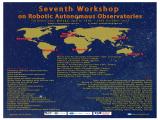
|
16/10/2024 - 20/10/2024
http://astrorob.iaa.es Torremolinos |

|
10/12/2024 - 12:30
ESERO, from space to the classroom With the slogan ‘from space to the classroom’, and building on the fascination that students have for space, the European Space Agency's (ESA) European Space Education Resource Office in Spain (ESERO Spain) provides resources to primary and secondary school teachers to improve their literacy and STEM (Science, Technology, Engineering and Mathematics) skills. Using the theme of space as a context for inspiration and motivation, ESERO runs a... Dr. Manuel González |

|
14/11/2024 - 12:30
Ozone and the Search for Life in the Universe As we approach the era where we will be able to characterize the atmospheres of terrestrial exoplanets, we are put on a path to answer one of humanity's most compelling questions: are we alone in the universe? Molecular oxygen (O2) with a reducing gas (i.e., methane) is widely regarded as a promising biosignature - a sign of life in the atmospheres of terrestrial exoplanets. However, there are circumstances in which O2 will be very difficult or... Dr. Thea Kozakis |

|
06/02/2025 - 12:30
Equality and harrassment in the CSIC. A case of study: IAA In this talk I will present the equality plans in the CSIC with a critical look at the particular situation of the IAA. I will focus on the current IAA Equality plan (the first one) and the changes it needs to live in an increasingly friendly environment. Equality will have a positive impact on the quality of the science we produce. Dr. Josefa Masegosa Gallego |

|
31/10/2024 - 12:30
Using CHEOPS to confirm small transiting exoplanets orbiting bright stars Exoplanets which transit their host stars are unique in allowing detailed characterisation of planetary radius, mass and atmospheric properties. NASA's TESS mission, which has so far observed 97% of the sky with precise photometry, is especially adept at detecting small transiting planets orbiting the brightest... Dr. Hugh Osborn |

|
31/12/2025 - 12:30
SO Colloquium: Bursting and cool slowly rotating stellar zombies The large efforts put into studying the transient Universe in the past years allowed the discovery of a variety of new astrophysical classes and events, many of them proposed to be related to the formation of a neutron star or a magnetar, the most magnetic pulsars. Pulsars are unique astronomical laboratories where the most extreme gravity and electromagnetism can be probed. The study of these objects transcends the traditional astrophysical... Dr. Nanda Rea |

|
06/11/2024 - 12:30
New UGR proceedings for PhDs Every year we all doubt what needs to be done and uploaded for the university. This is a reminder and updated seminar about the current proceedings that affect the PhD, especially important since the UGR has modified some things recently. Dr. Antonio García Hernández |

|
24/10/2024 - 12:30
SO colloquium: Role of Astrophotonics in Astronomy: The MARCOT Pathfinder Dr. Kalaga Venu Madhav, a renowned astrophysicist from the Leibniz Institute for Astrophysics Potsdam, will present a colloquium on the role of astrophotonics in astronomy, focusing on the MARCOT Pathfinder project. The talk will cover advancements in astrophotonic technologies and their applications in modern astronomical instrumentation. Dr. Madhav will discuss the development and implementation of photonic devices in telescopes, their impact... Dr. Kalaga Madhav |

|
21/11/2024 - 12:30
Towards the Standardization of the Modeling of Multi-Frequency Observations Blazars, a class of Active Galactic Nuclei (AGN) with relativistic jets oriented toward Earth, are powerful and highly variable emitters across the electromagnetic spectrum. Time-domain multi-messenger and multi-wavelength (MWL) studies are essential for understanding the physical processes at work on these systems, yet they often rely on proprietary tools specific to each instrument for reconstructing and modeling the collected data. In this... Dra. Mireia Nievas Rosillo |